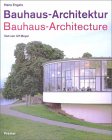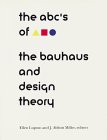|
|
|
 | . index . time line . forum . search . shop |
BauhausThe complete building is the final aim of the visual art, architects, sculptors, painters. We must all turn to the crafts. Together let us conceive and create the new building of the future which will embrace architecture and sculpture and painting in one unity, in which one day will raise toward heaven from the hands of a million workers like a crystal symbol of new faith.The Bauhaus whose name stood for a program, became a well known phrase all over the world. The teaching developed at the Bauhaus was adopted around the world wide into curricula of art and design institutes. The Bauhaus was not an institution with a clear program. It was an idea. It was the first college of visual arts in which the social distinctions between the traditionally academic and non-academic disciplines were abolished and all categories of visual art were parts have equal value in a complete whole. What happened was not so much the development of a style but the development of an artistic, social and educational concept. Johannes Itten developed the educational system of the early Bauhaus above all the famous "Vorkurs" (in English: "foundational or preliminary course"). The "Vorkurs" principles are well-known: first every student had to undergo this course giving him a reliable foundation of knowledge about materials, practical work and forms, tools on which one could build. The object of the Vorkurs instruction was the breakdown of conventional patterns of thoughts and distortions deducted by education in order to provide the foundation for creative work. The term Bauhaus was derived from the medieval Bauhütte and became the symbol for the great intention to unite creative art and technological usefulness. The application of artistic standards to industrial production created the famous Bauhaus lamp of Wagenfeld and Jucker and the tubular steel chairs of Marcel Breuer. The functioning of a thing should be researched before producing it. It had to fulfill practical use, it had to be durable, cheap, and beautiful. The Bauhaus was bold enough to develop new concepts both in education and design, to train the artist, designer and architect for a new age and to develop new forms. It was a paradigm for the creative approach to educational and design questions. Bauhaus at Dessau official websiteBauhaus archive. index . time line . forum . search . shop |
Bauhaus Architecture

A detailed survey of surviving Bauhaus architecture in Europe. 65 building projects in Germany, Vienna, Barcelona, Prague, and Budapest by architects including Walter Gropius, Ludwig Hilberseimer, and Ludwig Mies van der Rohe. Informative commentaries and site plans accompany the photographs. The ABC's of Bauhaus, The Bauhaus and Design Theory

This book includes illustrated discussions of Froebel and his influence on art and design. |
Copyright © 1998-2002 Froebel Web All Rights Reserved. info@froebelweb.com